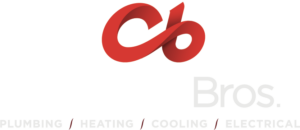The best time to learn about the dangers of household mold is now. It can have a long-lasting, detrimental effect on your physical and even mental health. Although a little bleach and water can remove visible mold in the home, it does little to protect you from the unseen dangers.
Household Mold – What is it?
Molds are simple, microscopic organisms that thrive indoor and outdoors in any environment. Molds, which include mushrooms and yeast, are fungi that are necessary to break down dead material and recycle nutrients in the environment. Molds reproduce through tiny spores that are invisible to the naked eye. The spores float through the air and may grow rapidly indoors when they land on wet surfaces in your home. Add heat and humidity above 50% and you have mold that proliferates rapidly. Although there are many types of mold, none of them will grow without moisture or water. While toxic mold sounds both terrifying and catchy, it’s not the mold that is toxic but the spores it produces. Molds that include S. chartarum, Fusarium, and Trichoderma release spores that include dangerous substances called mycotoxins. Once they become airborne and you inhale them, they absorb into your skin and intestines. In addition to toxic spores, these molds produce gases that release mycotoxins.
Invisible Mold, Visible Effects
The danger of household mold continues to rise. In fact, Farmers Insurance reported that there has been a 1,100 increase in mold related claims over the past decade. It doesn’t stop there. The Mayo Clinic released a statement that 93% of Chronic Sinus Infections have been attributed to mold.
Here are some of the negative effects of mold in your home:
- Respiratory Problems including Asthma and Infections
- Immune System Suppression
- Eye irritation with Burning, Watery or Reddened Eyes
- Dry and Hacking Cough
- Nose and/or Throat Irritation
- Skin Rashes or Irritation
- Memory Impairment
- Irritable Bowel Syndrome
- Body Aches and Pain
- Chronic Fatigue
- Food Intolerance and Allergies
- Headaches
- Mood Swings
- Nasal and Sinus Congestion
What Can You Do to Prevent Household Mold?
Moisture Control – Maintain humidity levels below 60% to avoid mold growth. To do so, try the following suggestions to keep moisture levels between 30% and 50%.
- Vent bathrooms, dryers, and other moisture-generating sources
- Avoid blockages to air-conditioning vents
- Increase ventilation by installing additional crawlspace and attic vents, open windows, and install an air-to-air heat exchanger
- Use exhaust fans when cooking, dishwashing, and cleaning
- Avoid the use of unvented heaters or high heat in confined spaces
- Set the thermostat to auto to prevent circulation of humid air
- Consider installing moisture sensors that sound an alarm when a leak occurs
- Use house paint with EPA-approved mold inhibitors
- Do not carpet areas in your home that are prone to collect moisture, including bathrooms, basements, and kitchens
- Ensure your home has adequate ventilation, which includes exhaust fans in the kitchen and bathrooms.




